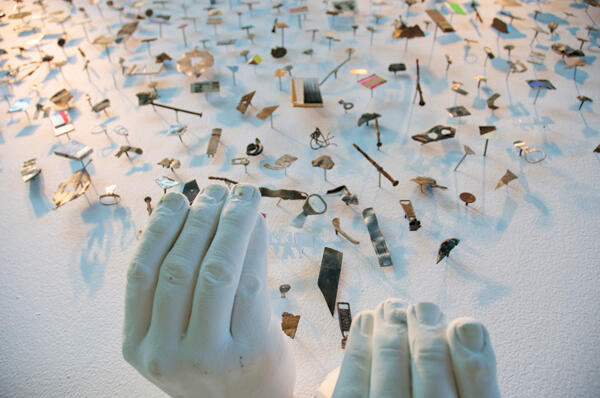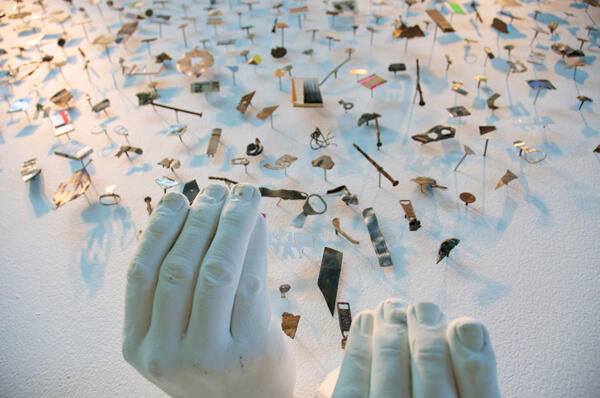_Migrating Identities_
Yerba Buena Center for the Arts, San Francisco
This exhibition displays works that have the power of revealing many layers of the ever-changing experience of immigration.

It presents the work of eight multicultural artists—Michelle Dizon, Ala Ebtekar, Naeem Mohaiemen, Meleko Mokgosi, Wangechi Mutu, Yamini Nayar, Ishmael Randall Weeks, and Saya Woolfalk. All of them are based in the United States, but they all have emotional connections to countries as Bangladesh, Botswana, India, Iran, Japan, Kenya, Peru, and the Philippines. Born between 1969 and 1981, their work is shaped by their relationships with numerous cultures, which were shaped by their experience moving frequently between different countries, making the meaning of the word home a shared space of experience, rather than a unique place.
These artists reveal the ways in which their identities have been transformed by freedom of movement, cultural preservation, and individual history. Nothing functions more powerfully in this respect than Ishmael Randall Weeks' hanging sculpture Ibeam (2012). On one side, it presents itself as a miniature range of battered mountainsides reminiscent of his native Cusco, in the Andes of Peru. The reverse view shows that the mountains were carved from the pages of piled books, all on the theory and practice of socialist and left-wing thought. All the books come from a very personal collection which used to be his father’s. Among the books you can find many other objects that refer to time and memory and that perform conceptual operations that rethink history with the objective of discovering a more inventive present.
Saya Woolfalk's latest video is titled Chimera from the Emphatics Series. Evoking sparks of South East Asian and Brazilian spirituality - created with filmmaker Rachel Lears ̶ it reflects its maker's syncretism as the daughter of a Japanese mother and an African American and white father. The character in this video embarks on a spiritual journey, as did the artist, who has done her share of traveling, spending every summer in Japan and living in Brazil, where she experienced the Brazilian people’s sense of themselves as a blend of races and cultures.
Meleko Mokgosi’s paintings combine media and movie imagery from the South African context into staged scenes. Some of her paintings show canine species that are indigenous to South Africa mixed with some other animal species, and some scenes that seem to come out of a documentary film. What is striking and most probably unavailable to the viewer’s understanding, (unless the viewer is interested in the history of South Africa or is from South Africa) is that the Afrikaan dog was bred by the Boers with the objective of controlling the native people. This kind of work forces the viewer to negotiate meaning and reveals a complexity that activates many different layers. The specificity of the work does not allow the viewer to project meaning, and such is, precisely, the artist’s objective.
This exhibition investigates what happens when artists start to inquire deeply into “place”, stepping outside themselves, to understand and reveal how culture is produced, but also looking deeply inside, to reveal how the self constructs cultural identity.
-
 I will not write on other peoples property, I will . . . (Installation view), 2008. Chalkboard and paint, 48 x 48 in. Photo: Israel Valencia, Courtesy di Rosa, Napa.
I will not write on other peoples property, I will . . . (Installation view), 2008. Chalkboard and paint, 48 x 48 in. Photo: Israel Valencia, Courtesy di Rosa, Napa.




